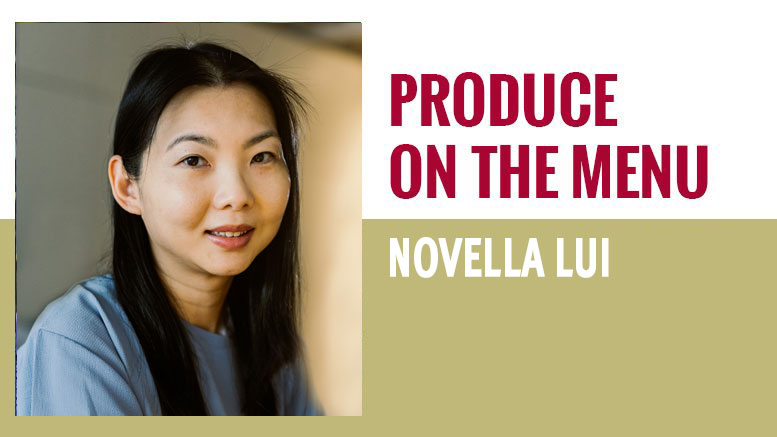Meet Ube: A Tuber in Rising Popularity
June 4, 2025 | 5 min to read
Ube, a purple yam significant in Filipino cuisine, is gaining popularity in North America thanks to social media and a growing interest in vibrant ingredients. This nutritious tuber contains antioxidants and offers a sweet, moist flavor. Often confused with taro and purple sweet potatoes, ube is versatile, used in pastries, desserts, and savory dishes. Its color changes with cooking methods, enhancing culinary creativity. Ube can be found in U.S. regions with climates similar to the Philippines.

Ube (pronounced ooh-beh) is a substantial part of the Filipino food culture. From street foods to fine dining, this purple vegetable is making its way into the mainstream food scene in the U.S.
Ube’s growing popularity in North American cuisine appears to be fueled by the rise of Filipino cuisine, social media engagement, and consumer interest in naturally vibrant ingredients.
So, what exactly is an ube? Ube, in Tagalog, stands for tuber. It is a type of purple yam, with a similar texture to conventional yams.
According to the U.S. Department of Agriculture’s (USDA) FoodData Central, every 3.5-ounce serving of ube has 27 grams of carbohydrates, 4 grams of fiber, and 0.1 grams of fat. It is also a source of vitamin C, and notable for its rich content of anthocyanins, a group of antioxidants that give the tuber its vibrant purple hue.
UBE, TARO, PURPLE SWEET POTATO: WHAT’S THE DIFFERENCE?
Ube is often mistaken as a taro and a purple sweet potato, but each has its own distinct texture, flavor profiles and culinary uses, explains Brian Chau, food scientist and founder of Chau Time, and Christine Farkas, RSE, CRC, founder, food innovation adviser, and certified research chef at iHeartFood Consulting.
Ube has a creamy, off-white skin that is thicker than the skin of purple sweet potatoes. Raw ube also has light purple flesh, which becomes a deep purple when cooked. It is mildly sweet and moist, with a slightly sticky texture and a nutty, vanilla-like aroma. Its vanilla notes are also more pronounced than taro and sweet potato.
Purple sweet potatoes, in contrast, are broader in size, drier, denser and starchier, with a more pronounced earthy sweetness ideal for baking and roasting.
Taro is a corm from the taro plant with brown skin, white flesh, and specks of purple embedded in it. While taro has a more savory profile and a mild and nutty flavor, it can also be used in sweet dishes.
USING UBE
In Filipino cuisine, ube is boiled and then mashed with condensed milk, integrated into desserts and baked goods to create sweet, creamy and smooth flavor and texture while providing color, depth and thickness. Its vibrant purple hue elevates the visual appeal of dishes, making it both striking and memorable.
Beyond its traditional roots, Chau and Farkas share creative ways to use ube:
- Pastries and breads: Croissants, laminated pastries and Japanese-style milk bread;
- Breakfast and brunch items: Pancakes, waffles and mochi doughnuts;
- Desserts: Cheesecake, flan, soufflé, cookies, ice cream and panna cotta;
- Beverages: Lattes, bubble teas, milkshakes, cocktails and mocktails.
Ube can replace sweet potatoes and taro, but adjustments may be necessary due to its higher moisture content and distinct flavor profile.
Chau explains, “Ube can replace sweet potatoes in desserts so long as the sweetness is monitored, because this purple tuber tends to be sweeter than sweet potatoes. The same can be said with taro in beverages so long as the consumer does not mind a more purple beverage. Depending on the recipe, the ratio of vanilla may also need adjustment.”
Ube is a versatile ingredient in savory dishes, adding viscosity and depth of flavor. “Boil, steam, bake and puree ube, and use as a base for sauces, soups and stew,” says Chau. “Ube has been used in various Southeast Asian cuisines, including Vietnam, where it is pureed and integrated as a base in a soup with pork and many herbs.”
As a direct substitute to other starchy root vegetables like sweet potatoes, ube in stews adds some sweetness to balance out the savory of meats.
Farkas suggests using ube in bao buns and steamed buns to add a subtle sweetness, while balancing the savory flavors for pork belly or crispy tofu fillings. You can also get creative with ube by incorporating it in risotto, croquettes, tamales, dumplings, savory pancakes, and roast and toss it into a warm salad for a unique depth of flavor.
For recipes that rely on the firmness or drier texture of sweet potatoes or taro, Farkas recommends using additional thickening agents, ingredients, or modified cooking techniques to achieve the desired consistency.
Beyond flavor, ube is a dynamic and visually appealing ingredient in a range of culinary applications.
Beyond flavor, ube is a dynamic and visually appealing ingredient in a range of culinary applications. Its natural color can also change based on the cooking method used and pH levels of the ingredients it is combined with.
Farkas explains, “In neutral to slightly alkaline environments, ube maintains its deep purple hue, while higher acidity levels, such as in citrus-based dishes, can cause the root vegetable to take on a reddish or pinkish tint. This color variability allows chefs to experiment with both flavor and presentation.”
WHERE TO FIND UBE
Ube can be grown in the U.S. in climates similar to the Philippines, such as parts of California, Florida, Puerto Rico, U.S. Virgin Islands, American Samoa, Guam and Hawaii.
Chau says getting the whole ube in bulk may be difficult, as it is grown more as a specialty crop in the country. “The best way to buy this purple vegetable in bulk is through import brokers or foodservice distributors that service Filipino restaurants,” he suggests.

Novella Lui, RD, MHSc, is a registered dietitian, and a freelance food, nutrition and health writer in Canada who combines her interest in food science, evidence-based nutrition, and health education through content creation. She is passionate about seeking new ways to bridge the communication gap between the business and the health side of food. Connect with Novella at [email protected].
3 of 18 article in Produce Business April 2025

